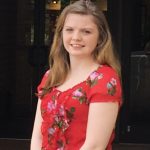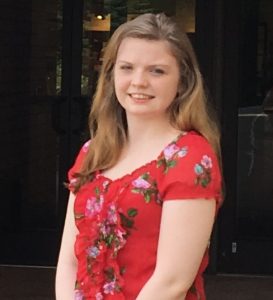Week 4 LCHS
 This week, I continued filling out the inventory for the Welles Collection at the Luzerne County Historical Society. During that time, I came upon some interesting information about Edward and Stella (Hollenback) Welles’ son, Edward Welles Jr., Edward Welles’ cousin Alexander Baird, and an achievement of Edward Welles. I came across information on Edward Welles Jr. in a document discussing the struggle with his health. Edward Welles Jr. suffered from digestive problems that doctors believed could have been prevented. Throughout Edward Welles Jr.’s first year to adolescence he would refuse to eat healthy and only eat non-nutritive foods. As a result, Edward Welles Jr. suffered from harsh stomach aches and malnutrition. Edward Welles Jr.’s decisions were influenced by the decisions of his family. His father and his brothers also suffered from stomach disorders that many individuals today recognize as the result of an irregular diet. Most foods the Welles family consumed were made with pork fat, foods with high amounts of starch, and fried foods. However, not all of Edward Welles Jr.’s health problems were due to poor diet decisions; he also suffered from eczema. He suffered with eczema throughout his life because he inherited it from his father.
This week, I continued filling out the inventory for the Welles Collection at the Luzerne County Historical Society. During that time, I came upon some interesting information about Edward and Stella (Hollenback) Welles’ son, Edward Welles Jr., Edward Welles’ cousin Alexander Baird, and an achievement of Edward Welles. I came across information on Edward Welles Jr. in a document discussing the struggle with his health. Edward Welles Jr. suffered from digestive problems that doctors believed could have been prevented. Throughout Edward Welles Jr.’s first year to adolescence he would refuse to eat healthy and only eat non-nutritive foods. As a result, Edward Welles Jr. suffered from harsh stomach aches and malnutrition. Edward Welles Jr.’s decisions were influenced by the decisions of his family. His father and his brothers also suffered from stomach disorders that many individuals today recognize as the result of an irregular diet. Most foods the Welles family consumed were made with pork fat, foods with high amounts of starch, and fried foods. However, not all of Edward Welles Jr.’s health problems were due to poor diet decisions; he also suffered from eczema. He suffered with eczema throughout his life because he inherited it from his father.
Another interesting artifact I came across was a group of letters written by Edward Welles’ cousin, Alexander Baird, during the Civil War and a document validating his service in the Confederate army. There is a small folder containing several pages of letters Alexander Baird wrote to his mother during his time at different camps and after battles. For instance, there is a letter Alexander Baird wrote after the aftermath of the Battle of Fredericksburg. Baird states that at least 5000 Union soldiers were captured during the battle and praises General Robert E. Lee for his ability to foil the Union army’s plan of attack. Lastly, I came across a small pamphlet concerning Edward Welles’ retirement. The pamphlet was created by directors and other officials at the People’s Bank located in Wilkes-Barre, and states that they acknowledge Edward Welles’ retirement, congratulate him, and wish him the best. Next week I will continue to process this collection and hope to discover more interesting things about the Welles.



